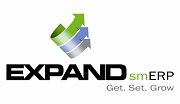Planning for an ERP implantation in near future? Worried about rising costs? Not sure about what is right for you? ERP implementation surely comes with a lot of challenges, even though its benefits are manifold. In the next few years, your business value will reach new heights and touch new shores of expansion, with successful ERP integration. With a prior knowledge of the challenges and bottlenecks, you may be better prepared. Here, we discuss some of the common challenges of ERP implementation.
Incorrect Requirement Analysis
ERP implementations in most cases fail because of incorrect requirement analysis. One needs to know the difference when an ERP application is integrated with ane-commercesite and a POS software.
You need to know whether the ERP app needs to be integrated with CRM as
well. However, in most companies requirement analysis is done by people with
limited knowledge of ERP. Primary emphasis is laid upon the cost and faster
execution. But unfortunately, the project fails in most cases as the
requirement is not fully understood in the hurry of haggling about the
payments. To have more clarity on ERP implementation, case to case differences,
actual time and money to be invested, involve people with good knowledge on
ERP. They would advise you, guide you in better decision making, and
thereby drive better results. Make sure the requirement analysis checklist is
reviewed by a techie team, before signing on the dotted lines.
Lack of Proper Training
Inefficient Project Management
Larry Ellison, the founder of Oracle Corporation once said that taking care of one’s customers is important, but taking care of one’s employees is more important. This implies that you should have the right resources in your team for customer success. You need to understand their worth and utilize their full knowledge and potential for an efficient project management. Trust them, mentor them, train them and let them come up with a killer project management plan that will not only ensure a successful ERP implementation, but a better future for your business. Only with a meticulous project management you can achieve that, no amount of cost cutting or package deals help.
Customization
ERP is often misunderstood as awholesale package solution for a company.
But unfortunately it is not. ERP applications are actually a framework with
which a customized solution is built. This means, your requirements have to be
defined well in advance and accordingly a customized ERP solution will be created.
For that you need to define the workflows and do a capability analysis,
beforehand. You might have to make a few minor adjustments in the application
solution to meet all your enterprise needs. These adjustments or modifications
differ from suite to suite, and might be required at the beginning or sometime
in the middle of implementation. If you are prepared for a capacity planning,
delays in implementation and time loss because of system outage may be kept at
bay.
Rising Operational Expenses
Overhead cost is one of the biggest challenges of ERP implementation.
The initial cost of implementation is high, but the customization and
maintenance costs are even higher. The more customization needs are, the higher
are operation costs. Maintenance costs are of course, a necessary evil, which
cannot be brushed aside. However, with an efficient requirement analysis and
resource planning, much of this cost may be brought under control. Sit with the
best brains in the organization to find out what you really for enhancing
business value. Ask for only what you actually need. Do not go by the
attractive fringe benefits or “added features” which the application promises.
You might not need them at all. Ask for features that will add value to your
product or service, attract more business, and position you better as an
entrepreneur. That way, you will get the true value for your made-to-order
features, without costing a bomb.
Now that you are aware of the technological challenges, your organization is well-equipped for integration. With a smart planning you can get your best consultants onboard to address the potential issues, discuss organization-specific needs, and perform a due diligence for a hassle-free ERP implantation. With their business insight you can plan for implementation monitoring and low-maintenance solution. Embrace ERP implementation with an open mind and ready infrastructure.
Log on to http://www.expanderp.com for more insight on industry best practices and changing technology trends.




